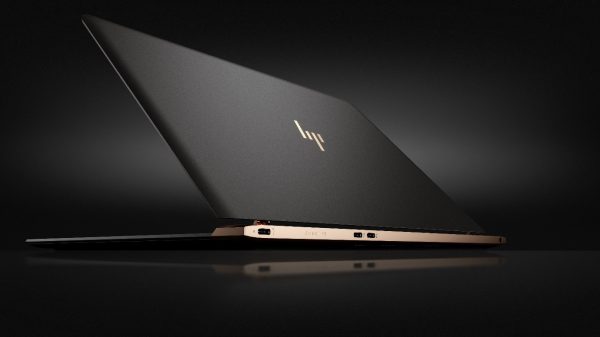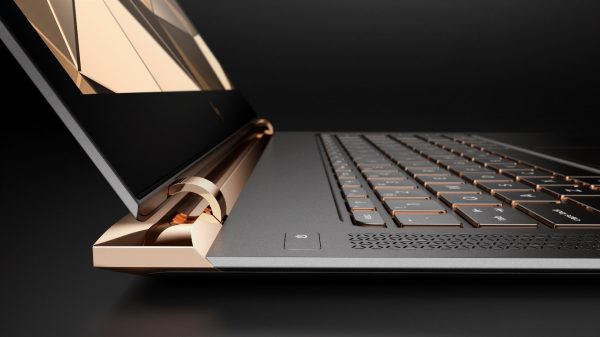
Laptops have become increasingly thin over the years, and the newly launched HP Spectre is no exception. In fact, HP touts it as the world’s thinnest laptop.
With a thickness of just 10.4mm, the Spectre is even thinner than Apple’s Macbook, which is 13.1mm at its thickest point. During its launch in Singapore, HP was keen to show off the Spectre’s machined aluminium chassis and carbon fibre bottom, which make it as thin as an AAA-sized battery.
What makes the Spectre all the more impressive is that HP was able to pack the latest Intel Core i5 and i7 processors inside that thin frame. This means it’s a more powerful device than the Macbook, which uses Intel’s slower Core M processors.
While the Spectre would not be able to play all of the latest demanding games, it should still be able to achieve playable frame rates on fairly recent titles at lower resolutions.
Of course, cramming these processors into such a thin device would raise concerns about overheating. In order to keep the Spectre running cool, HP integrated a hyperbaric cooling system.
The Spectre draws in cool air via two vents at the bottom and directs it over the processor before expelling the air through vents on the rear of the copper-accented hinge.
Speaking of the hinge, HP calls it a piston hinge, which gives the Spectre a hinge-less look when closed. When opening it, the hinge makes the screen seem as if it’s floating.
At the rear of the hinge are three USB Type-C connectors, two of which support Thunderbolt, as well as a headphone jack. I definitely approve of the number of connectors, especially when compared to the Macbook’s offering of one measly connector.

In my opinion, the high-gloss copper accent of the hinge, as well as the copper highlights of the keyboard, complements the black aluminium body extremely well. The design of the Spectre screams luxury, and it looks like a marriage between jewellery and technology.
And the Spectre doesn’t only look good. It feels good. Weighing only 1.1kg, the laptop felt very much like a premium device in my hand. It is light, yet felt durable enough to withstand a drop (I didn’t try that, to be fair).
HP has also added Bang & Olufsen stereo speakers along both sides of the keyboard to heighten the audio experience of the Spectre.
With a 38 watt-hour hybrid battery that is split into two battery pieces, the Spectre boasts up to 9.5 hours of battery life, which is very impressive given the amount of power packed into it.
The Spectre features a 13.3-inch Corning Gorilla Glass display with a 1,920 x 1,080 resolution, which is lower than some of the other competitor devices in the market. HP said that this was a conscious decision made in order to reduce the thickness of the device.
While I personally am not a fan of the industry’s race to make the thinnest devices, I can appreciate this compromise. A Full HD display is still good enough for most people, and a higher resolution screen would come at the expense of the battery life as well.
What I’d like to see improved is the keyboard. During my hands-on, the buttons felt fairly mushy. It still offered a decent typing experience, but it was certainly not as good as typing on my Microsoft Surface Pro 4’s Type Cover.
All in, the HP Spectre is an impressively designed laptop that sports very capable and competitive hardware. However, it comes at a steep price. You pay S$2,299 for the Core i5 model (256GB solid state drive and 8GB RAM) and S$2,599 for the Core i7 model (512GB solid state drive and 8GB RAM).
If you are willing to pay for luxury, the Spectre is available for pre-order now at the Consumer Electronics Exhibition show at Suntec Singapore. It also comes with a free premium executive brown top load bag (worth S$149) that complements the black and copper design of the Spectre. Expect to receive the laptop in June.




